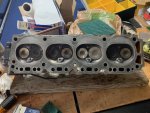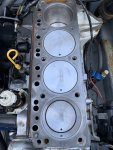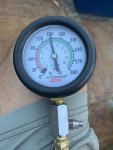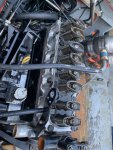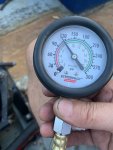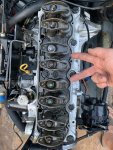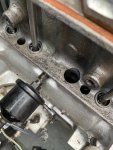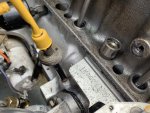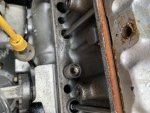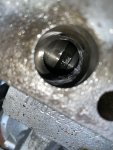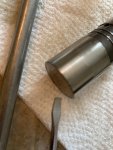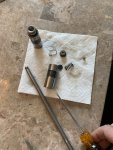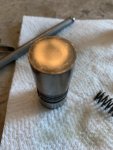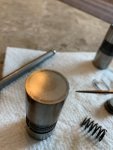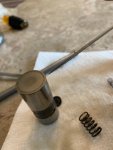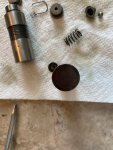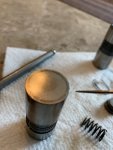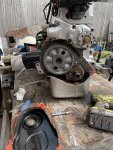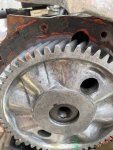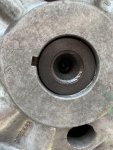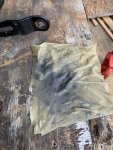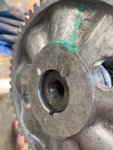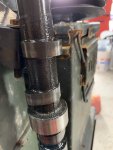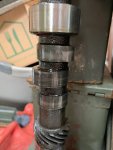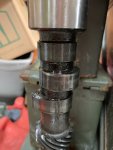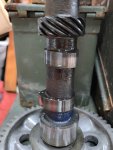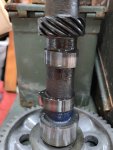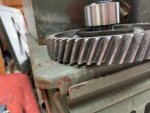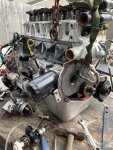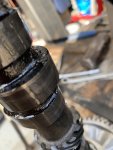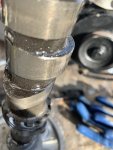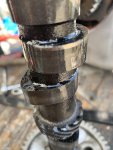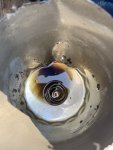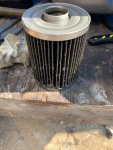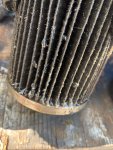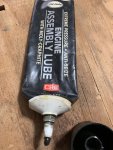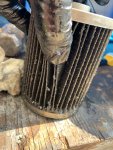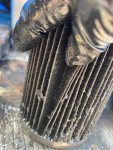Tycer,
I did pressure wash the heck out of the block following acid baths and scrubbing. Then the machine shop tanked it so my conclusion, the block was clean. From there all new parts went in by me, Ebay Elgin brand 3.0 rebuild packages. I did my best for rebuild "in the house, bagged nightly engine assembly.
So here we are, cylinder 2 at zero compression, with a dry rocker.
Cylinder 3 at 126 psi with a dry rocker, new lapped Elgin valves, New Elgin rods, and a new Elgin rocker and nut assembly, and still the rocker is trying to walk off the valve stem seat.
I pulled the pushrod access cover off, pulled the two offending pushrods and here's what I found;
Cylinder 3 was first. Dry although the lifter had a small amount of oil in the cup, I had a time compressing it and only got it to go down a small amount with oil expelling out the side of it. Calling it partially frozen or sticking.
Cylinder 2 lifter. The cup was full of oil, yet none was getting up the push rod! I could not compress the lifter with as much pressure as I could put on it with the push rod and other methods. I'm sure you're realizing the answer. Even I was drawing conclusions, with your guidance, at this point. I pulled the lifter...... 1/2 way, just above the oil pick up groove, before it refused to come out. Vice grips and a little twisting and she came up and out. The Elgin lifters do not have the hardened faces like the factory ones I pulled did. Wish they did. My old ones looked great, but from my understanding, you should never mix old and new parts.. New Elgin cam shaft also. Lobe looked ok through the lifter tunnel.
The seat of the lifter that rides on the cam had a slight amount of mushrooming. I felt the rough edge when I got it out and then when I took it in for inspection, as pictures indicate, I saw and felt the problem that I could not compress the lifter with. I found some small metal fragments inside the lifter between the plunger and side wall, and never was able to depress it. My guesstimating, this was most likely causing the C2 zero compression. I also found the small New lifters are a whopping $3.50 a piece available at Autozone 2 miles away. I really want to find new, or use my old hardened face lifters. If I do, I'll likely replace them all.
Now my paranoia has got me wondering about the other lifters that are oiling, and the metal lifter fragments I likely knocked off while pulling the lifter out. Some lifters are oiling very well (Cyl. 1) and others off and on moderately well. I will test cycle many times before closing it up, putting the valve cover on and test running on the water for some level of safety. The oil is pristine BTW.
Once again Tycer, Thanks for the lifter advice and thank you to all forum members who gave their input. Hopefully, the bottom of this problem has been found, and hopefully this detailed forum post helps others so they are able to avoid some of the suffering. I'll update when she's running, and likely I'll watch the lifters with regular valve cover removal checks for a while.
Best, Ralph




















